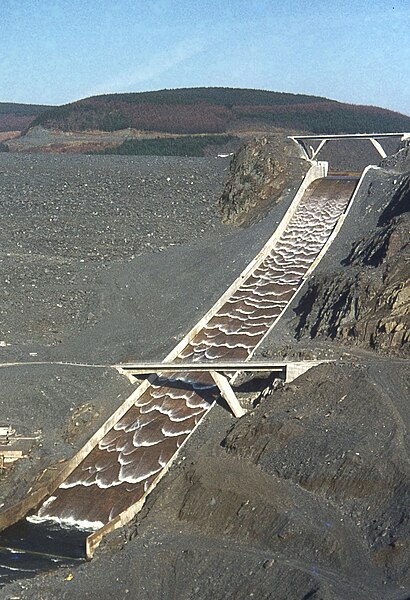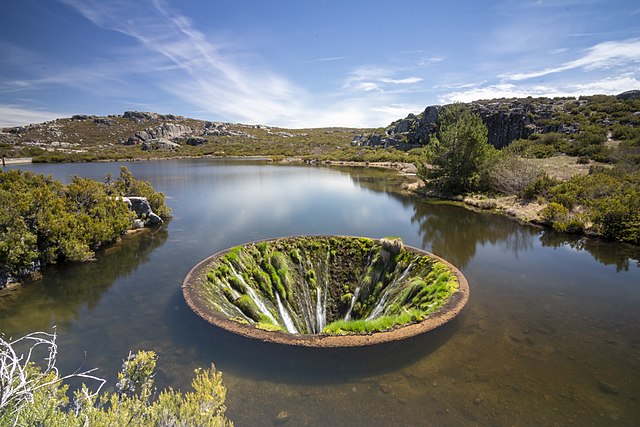A spillway is a structure used to provide the controlled release of water downstream from a dam or levee, typically into the riverbed of the dammed river itself. In the United Kingdom, they may be known as overflow channels. Spillways ensure that water does not damage parts of the structure not designed to convey water.
Chute spillway of Llyn Brianne dam in Wales
A stepped chute baffled spillway of the Yeoman Hey Reservoir in the Peak District in England.
Vegetation has grown in the bell mouth spillway at Covão dos Conchos since its construction in 1955 such that it resembles a natural formation
Glory hole spillway in Lake Berryessa, California, in March 2017
Floodgates, also called stop gates, are adjustable gates used to control water flow in flood barriers, reservoir, river, stream, or levee systems. They may be designed to set spillway crest heights in dams, to adjust flow rates in sluices and canals, or they may be designed to stop water flow entirely as part of a levee or storm surge system. Since most of these devices operate by controlling the water surface elevation being stored or routed, they are also known as crest gates. In the case of flood bypass systems, floodgates sometimes are also used to lower the water levels in a main river or canal channels by allowing more water to flow into a flood bypass or detention basin when the main river or canal is approaching a flood stage.
Tokyo floodgates created to protect from typhoon surges
A sluice gate on the Harran canal
A flood wall gate at Harlan, Kentucky
A US Army Corps of Engineers hinged bascule crest gate during installation








